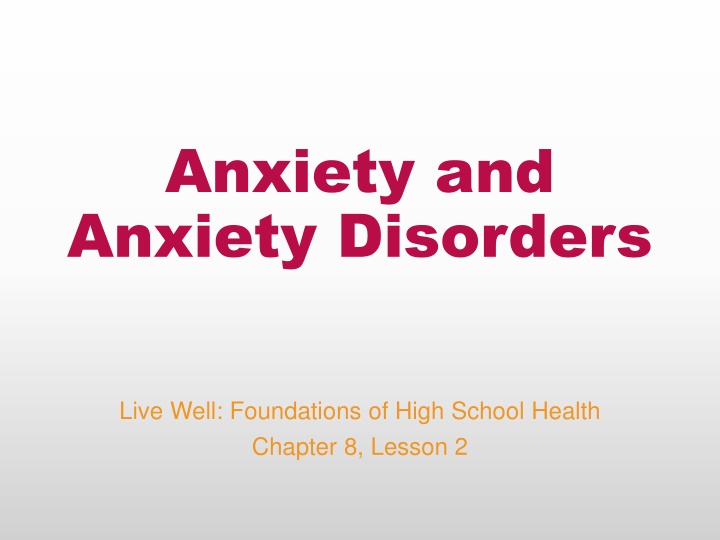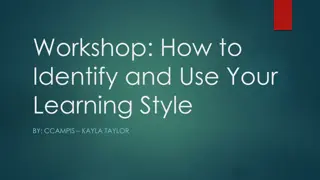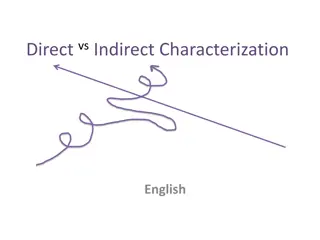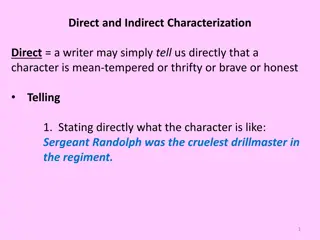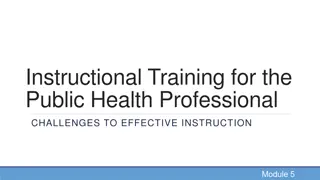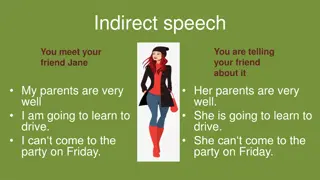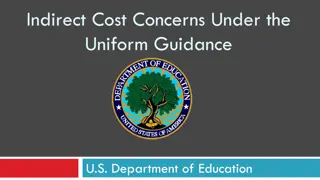Indirect Style in Spanis
In Spanish, when referring to something said by another person, we use indirect style. This involves changing pronouns, possessives, but maintaining the tense and time expression. If the introducing verb is in the past, more changes are made. Explore the transformations of direct and indirect speech, including changes in pronouns, determinants, verb tenses, and time expressions based on the tense of the introductory verb. Discover the adjustments of verb tenses in direct and indirect speech and essential time expressions in Spanish.
Download Presentation

Please find below an Image/Link to download the presentation.
The content on the website is provided AS IS for your information and personal use only. It may not be sold, licensed, or shared on other websites without obtaining consent from the author.If you encounter any issues during the download, it is possible that the publisher has removed the file from their server.
You are allowed to download the files provided on this website for personal or commercial use, subject to the condition that they are used lawfully. All files are the property of their respective owners.
The content on the website is provided AS IS for your information and personal use only. It may not be sold, licensed, or shared on other websites without obtaining consent from the author.
E N D
Presentation Transcript
Anxiety and Anxiety Disorders Live Well: Foundations of High School Health Chapter 8, Lesson 2
Write About It What does it feel like to be anxious? Identify a time when you were feeling anxiety and try to describe what it felt like and what you noticed about how you felt.
Can you . . . Compare and contrast anxiety and anxiety disorders? Identify five symptoms of anxiety disorder? Explain three common influences on teen anxiety? Describe the value of gratitude and explain two ways to practice it?
Anxiety Disorders Anxiety is an emotion that includes tension, worried thoughts, and physical change like increased blood pressure. People with anxiety disorders frequently have intense, excessive, and persistent worry and fear about everyday situations. These feelings of anxiety and panic interfere with daily activities like going to school or hanging out with friends.
Common Anxiety Disorders General anxiety disorder Panic attacks or panic disorder Social anxiety disorder Simple phobia Separation anxiety Selective mutism
Common Symptoms of Anxiety Disorders
Influences on Anxiety Disorders in Teens Several social influences have contributed to the rise of anxiety-related disorders in teens. High expectations and the pressure to succeed Social threat and violence Social media and its potential judgment and criticism
Getting Help for Anxiety Disorders Mental disorders, such as anxiety, can be hard to manage. Common techniques for managing anxiety- related disorders include therapy, medication, support groups, and self-care.
Practicing Gratitude Gratitude refers to being appreciative for the large and small things you have and experience in life. Strategies for practicing gratitude include daily three, counting your blessings, gratitude alphabet, and journal.
Skill-Building Challenge Look over the strategies in the Practicing Gratitude section and think about other ways you can practice gratitude. Identify two options that might work for you. Try out each strategy for at least one week. Then reflect on how well they worked.
